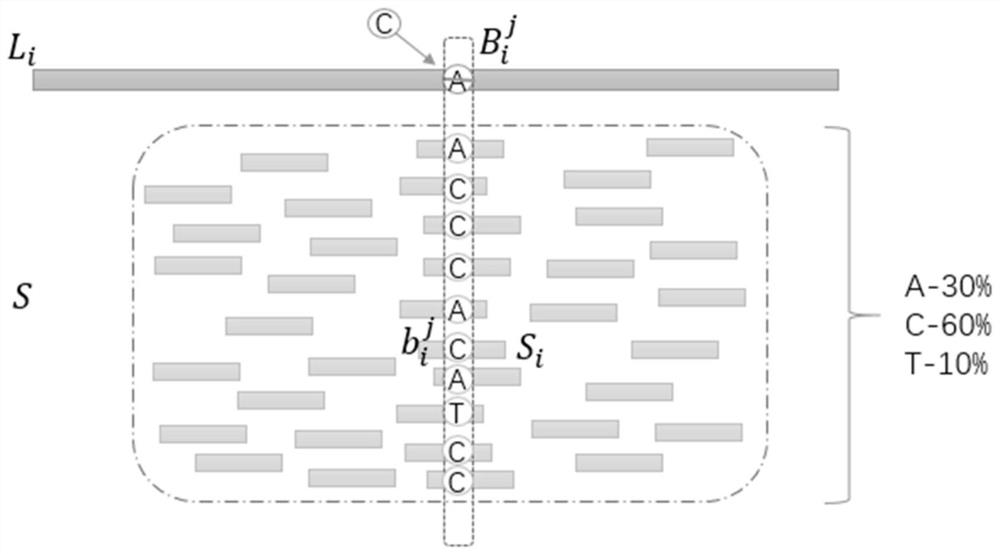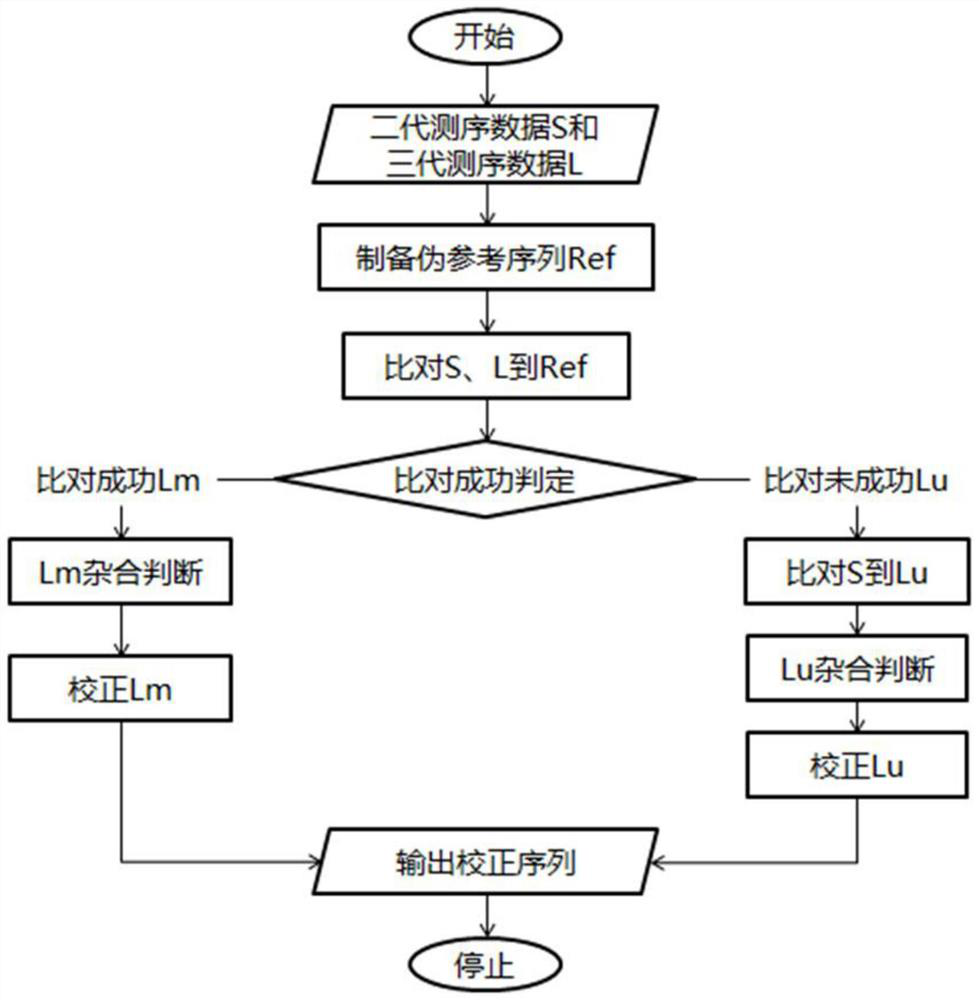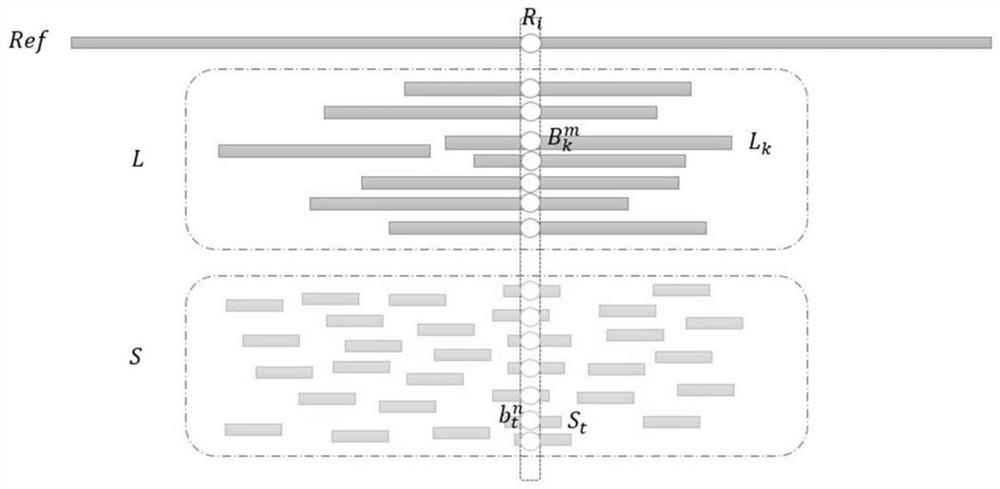Hybrid methods for correcting sequencing errors in third-generation sequencing data under heterozygous variation
A sequencing data and sequencing technology, applied in sequence analysis, genomics, instruments, etc., can solve the problems of miscorrection of heterozygous variation, achieve accurate correction, avoid repeated comparisons, and improve calculation speed
- Summary
- Abstract
- Description
- Claims
- Application Information
AI Technical Summary
Problems solved by technology
Method used
Image
Examples
Embodiment Construction
[0057] The present invention provides a hybrid method QIHC (QI Heterozygosity Correction) for correcting sequencing errors in third-generation sequencing data under heterozygous variation. The input data are second-generation sequencing data (hereinafter referred to as S) and third-generation sequencing data ( Hereinafter abbreviated as L), use the existing comparison software and assembly software to process the input data, judge the heterozygosity of the gene locus based on the Bayesian classifier principle, combine the results of the heterozygosity judgment to analyze the heterozygosity in L Reads are corrected, which solves the problem of low accuracy and ineffectiveness of existing correction algorithms when dealing with heterozygous variants.
[0058] The present invention is based on following assumptions with general consensus in the academic circle:
[0059] 1. According to the existing sequencing technology standards, there may be 5 types of sequencing results for a ...
PUM
 Login to View More
Login to View More Abstract
Description
Claims
Application Information
 Login to View More
Login to View More - R&D
- Intellectual Property
- Life Sciences
- Materials
- Tech Scout
- Unparalleled Data Quality
- Higher Quality Content
- 60% Fewer Hallucinations
Browse by: Latest US Patents, China's latest patents, Technical Efficacy Thesaurus, Application Domain, Technology Topic, Popular Technical Reports.
© 2025 PatSnap. All rights reserved.Legal|Privacy policy|Modern Slavery Act Transparency Statement|Sitemap|About US| Contact US: help@patsnap.com



